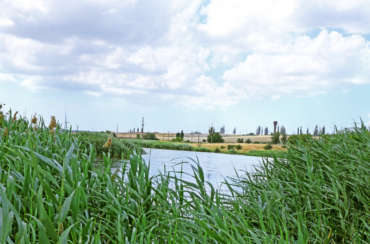
The Critical Sources Of Freshwater On Earth: Where Your Drinking Water Comes From
You receive the majority of your water from taps, fridges, and bottled water, but even that water has to come from somewhere. Only 3% of the water across the globe is pure enough to be considered potable, and a large portion of that resource is locked away in glaciers that we cannot access while global warming is kept somewhat at bay. What we consume every day comes from two primary sources groundwater and the water in lakes and rivers.
What Is Potable Water?
Drinking water is in scarce supply. In 2017 over 884 million people did not have safe water to drink. Water can be contaminated by a number of factors, including heavy metals, radioactive elements, bacteria, and microorganisms.
All water contains a small number of contaminants, but it is strictly monitored by federal and state organizations to remain within safe standards.
Groundwater The Earths Hidden Gem
I’ll skip the redundant explanation of what lakes and rivers are and skip right to the important parts. Few people realize just how vital underground water sources are.
Groundwater is held underground in the soil or in pores and crevices, and rock. The majority comes from these other pockets because it would be infeasible to diffuse enough water from the soil to be effectively used. While these pockets are naturally refilling, overdrawing from them forces us to drill deeper and deeper to find new sources. We are currently seeing this dilemma in action across Texas.
Modern groundwater sources are anything considered less than 50 years old and makeup. A study from 2015 found that less than 6% of the total groundwater on earth is modern. That percentage alone is equivalent to a 3-meter deep pool the size of all continents combined.
Fun Fact: While it is difficult to pinpoint the age of groundwater, a man-made time stamp is visible in the form of radiation, marking the time when atomic bombs were first tested.
There is also some speculation into whether drawing from groundwater sources releases additional carbon into the atmosphere that could be harmful to our ozone layer, but these claims are so far unsubstantiated.
The Largest Sources Of Freshwater On Earth
Above ground, there are a few significant sources of naturally replenishing freshwater.
These Data Points Come From The 71 Percent Organization
- The American Great Lakes account for 21% of all surface freshwater.
- Lake Baikal in Russia holds 20% of all unfrozen freshwater.
- Africa’s Lake Tanganyika has the second-largest volume of freshwater.
While these sources are readily available without extensive drilling, they do come with their own quality concerns. For example, in the U.S Upper Midwest States, water acidity is a common issue. Water with a pH of 7 is considered neutral, and in Wisconsin, the balance can drop as low as a pH of 5. This level of acidity is dangerous to piping as it can corrode and cause leaks.
The solution to this includes additional filtration by Waste Water Facilities and the installation of water softeners in your home.
Wrap Up
Freshwater is, at the same time, a seemingly inexhaustible resource and a minimal one. Our bodies need clean water to survive, and any disruption in that process can lead to illness, injury and death. We have seen firsthand the effects of unclean water in Flint, Michigan, and severe dehydration in third-world countries. Still, none of it would be possible without safe and effective water transportation methods. Our systems can divert water over great distances and it is all portable for pipe managers to be effectively resilient in a time of reduced resources. If you are interested in temporary and portable above-ground pipeline solutions, you can check out our shop.



 Sales Office Location
Sales Office Location
 sales@portablepipelinesystem.com
sales@portablepipelinesystem.com